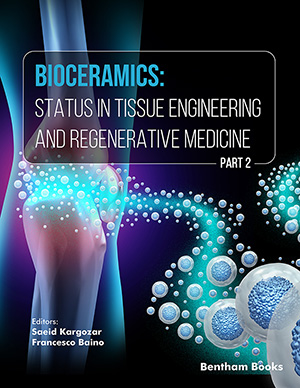Abstract
SHS investigation development is considered from the geographical and historical viewpoint. 3 stages are described. Within Stage 1 the work was carried out in the Department of the Institute of Chemical Physics in Chernogolovka where the scientific discovery had been made. At Stage 2 the interest to SHS arose in different cities and towns of the former USSR. Within Stage 3 SHS entered the international scene. Now SHS processes and products are being studied in more than 50 countries.
Abstract
Bioceramics applications in dental materials date back to 1892, and since then, many advances have allowed the development of bioceramics for applications in three main areas of dentistry: restorative, rehabilitative, and regenerative dentistry. This chapter will cover clinical situations in which dental tissues need clinical interventions using bioceramics. The main properties of these ceramics and their main advances and applications in restorative, rehabilitative, and regenerative dentistry will also be addressed. In summary, innovation in bioceramics has allowed the development of implants and restorative materials able to bind to the dentin and enamel, besides showing suitable aesthetics and mechanical properties for applications in load-bearing regions. These bioceramics have also been used as scaffolds in alveolar, mandibular, and maxillary bone regeneration, and recently computer-based technologies like CADCAM and 3D-printing have guided their advances. Finally, future perspectives and open questions are discussed at the end of the chapter.
Keywords:
Additive manufacture, Alumina, Bioactive glass, Bioinert glass, Bone regeneration, Calcium phosphate, Dental implant, Dental restauration, Dentin hypersensitivity, Drug delivery, Endodontics, Glass-ionomer cement, Hydroxyapatite, Periodontics, Regenerative dentistry, Rehabilitative dentistry, Restorative dentistry, Tricalcium phosphate, Tissue engineering, Titania, Zirconia.
We recommend

Authors:Bentham Science Books






